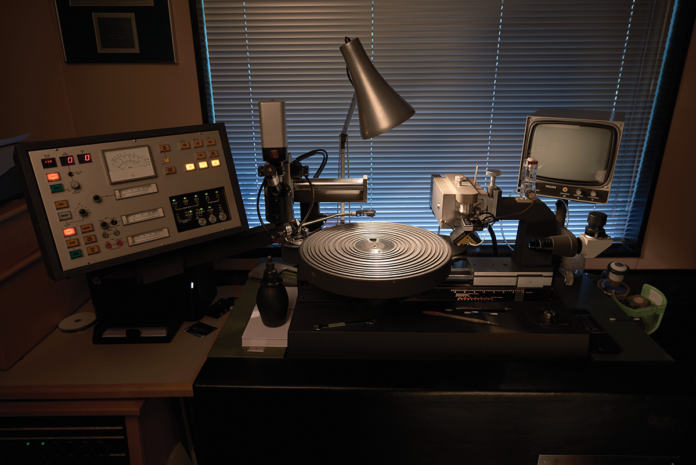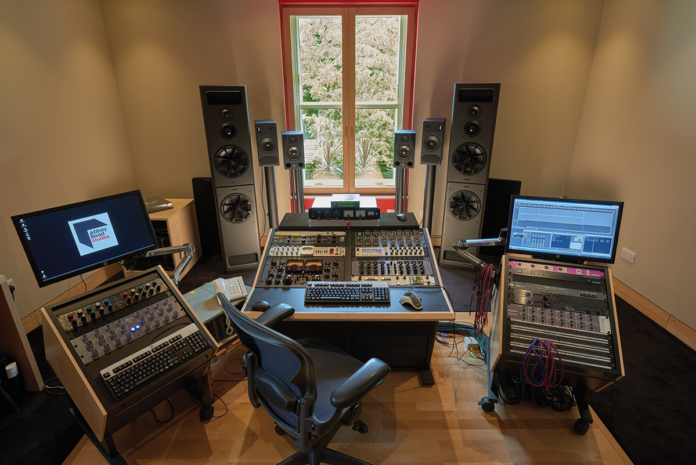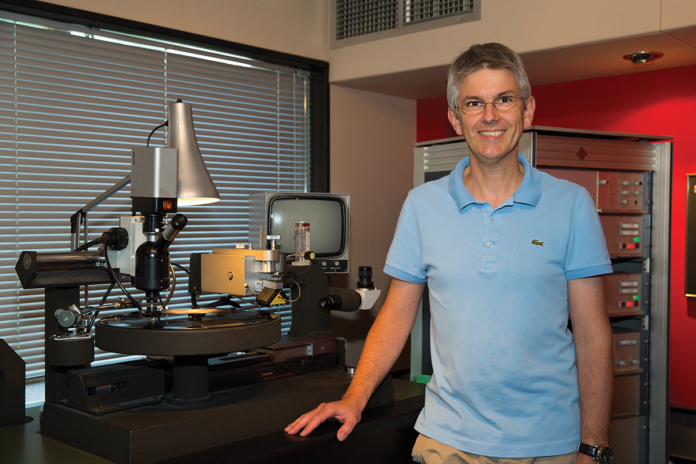The art of cutting a master lacquer at its best.
Despite the advent of streaming and digital physical mediums (CD, audio files, etc.) as ways to listen to music, vinyl still seems to be one of the most loved and beautiful mediums ever. Indeed, it has resurfaced strongly in the last decade, with mastering studios dusting off their lacquer lathes and factories reopening their vinyl pressing plants. The technology to create a master and to manufacture vinyl records reached its highest development in the 80s (e.g. Direct Metal Mastering), although there were already great advances in the lathes and techniques used in the sixties and seventies, such as cutting the lacquer at half speed, with great examples in the records of Mobile Fidelity Sound Labs and Motown Records. Nowadays, there is also the increasingly extensive series of re-editions and new releases made at Room 30 on Abbey Road Mastering by Miles Showell.

But why cut the lacquer master at half speed? What’s the real benefit? Basically, when we cut the master of one side of the vinyl record, what we do is vibrate a sapphire or diamond stylus proportionally to the audio signal we are trying to record (usually stereo). That vibration sculpts a spiral groove in a virgin aluminum disc covered with a layer of lacquer (black nitrocellulose lacquer) that rotates underneath the head with the stylus. This groove in the lacquer, with its undulations or waves, represents the audio of the recording. Since the audio has a frequency spectrum covering the range of 20 Hz to 20 kHz, the stylus must be able to vibrate at all these contained frequencies. And of course it is capable of doing so. The point is that in the last octave of the spectrum (from 10 kHz to 20 kHz, the high or treble frequency range) the vibrations become increasingly rapid, producing a very high mechanical and thermal stress on the head and stylus, which can affect the quality of the cut and therefore the representation of these oscillations, i.e. the high frequency response. So a solution to improve that response is to cut at half speed. In this case, when we reduce the speed of the plate by half, we also have to reduce by half the speed of reproduction of the audio that we transmit to the cutting head, so that each of the frequencies is reduced by half in this whole process. For example, if our audio has a 12 kHz component, during process it will be reproduced as a 6 kHz component (half of 12 kHz). This slower vibration (from 12000 cycles per second to 6000) causes less problems and stress on the whole mechanical system and will be cut in the lacquer more accuratelly. Obviously this half speed process takes place only in this cutting phase. When we play that lacquer -or the vinyl records made from it- at normal speed, the music will sound at its natural speed and tone and with an improved high frequency response.

To accomplish this half speed cutting, adapted and specific equipment is needed:
- A lacquer that can cut at half speed (16 2/3 RPM for 33 1/3 RPM records and 22 1/2 RPM for 45 RPM records) with an adapted head and amplifiers. The latest Neumann VMS have this option as standard, but they are often adapted and improved further, as with the RIAA filters, which must be able to change the filter frequencies by half.
- A playback system that can play at half speed while maintaining the highest quality. In addition, it must be a system with dual stereo output that feeds both the lathe computer and the cutting head. The audio fed into the computer is advanced by one full turn of the record so that the computer can calculate the groove spacing according to the amplitude of the modulation of the audio level. In the case of analog tape machines, they must have an extra, forward-feed head to feed the computer that calculates the spacing, and if Dolby A or SR type noise reducers are needed, they must be adapted to decode audio at half speed, and very few do. Any other processing in frequency and/or dynamics must be done with parameters adapted to half the frequency and/or double the time. This adds to the difficulty of listening to audio at half speed and one octave lower. The solution would be to do a high resolution digital transfer (minimum 192 kHz/24 bits) at normal speed from the tape machine playing at normal speed and with its noise reduction if it is required. In this transfer the necessary analog processing can be done, usually EQ and compression but not limiting. With the digital master obtained from the transfer, extra processing can be carried out in the digital domain, such as de-esser, restoration and editing, limiting, etc. Once this digital master is prepared it is used in half speed playback, going out by the two pairs of outputs needed (advanced in time for the control of the computer of spacing and audio to be cut into the lacquer). Specific DAWs such as SADiE or SoundBlade are used for this purpose.
Miles Showell uses this latest technique at Abbey Road Mastering’s Room 30, equipped with a modified Neumann VMS-80 lathe, an AMPEX ATR-102 tape machine with custom Flux Magnetics heads and availability of Dolby A and SR decoders, a SADiE v6.1 digital workstation (DAW), Benchmark A/D and D/A converters, PMC MB2 XBD monitors and mastering-grade processors.

Recently my wife gifted me a copy of Amy Winehouse’s Back to Black, cut with this technique by Miles, and the sound experience is magnificent: a very balanced sound across the frequency range, with defined and very pleasant highs and solid bass, a wide dynamic that breathes and a very solid stereo image. A musical delight with a superb sound. Miles used the masters of the original mixes without the compression/limitation that the mastered version had for the original CD, and you can appreciate this in the wonderful dynamics that this version has.

If you want to know more about the art and science of acetate cutters you can visit The Secret Society of Lathe Trolls and if you want to know more about Miles Showell, don’t miss this interview, also this one or this one.